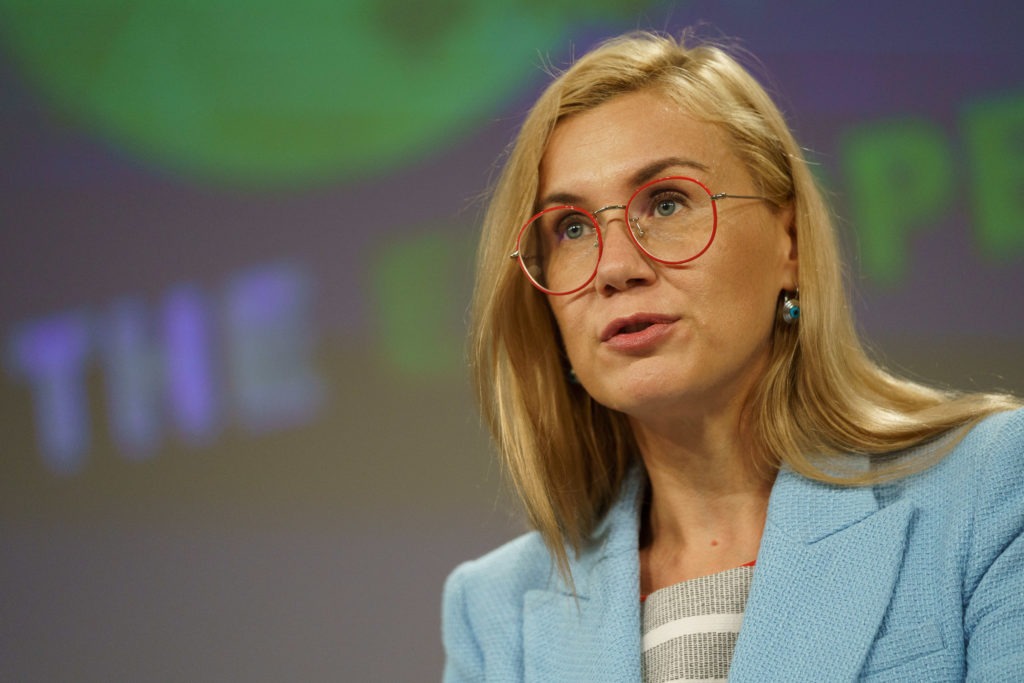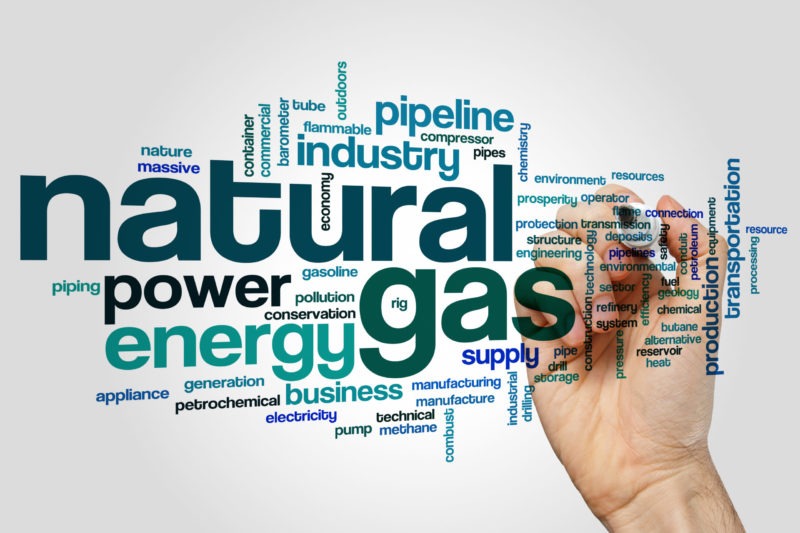Rising Energy Costs and API Supply
Escalating energy prices are impacting global manufacturing and supply chains. In the EU, leaders are proposing measures to alleviate pricing pressures. What’s the plan?
Economic recovery brings pricing pressures
A key variable in the near term for the performance of all industries, including the bio/pharmaceutical industry, will be the impact of higher energy, raw materials, and shipping costs, which have risen in 2021 as countries recover from the COVID-19 pandemic and demand for products and services have increased.
The global economy is projected to grow 5.9% in 2021 and 4.9% in 2022, according to an October 2021 forecast by the International Monetary Fund, compared to a decline of 3.1% in 2020. In advanced economies, which include the US, Europe, Japan, and Canada, real gross domestic product (GDP) growth is projected at 5.2% in 2021 and 4.5% in 2022. In emerging economies, real GDP growth in China is forecast at 8.0% in 2021 and 5.6% in 2022 after rising only 2.3% in 2020. In India, real GDP growth is projected at 9.5% in 2021 and 8.5% in 2022 after a decline of 7.3% in 2020.
The IMF forecast explains that pandemic-induced supply–demand mismatches, rising commodity prices, including for energy, and other factors will contribute to inflationary pressures in the near term. Oil prices are expected to increase in 2021 to close to 60% above their low base for 2020. Non-oil commodity prices are expected to rise almost 30% above their 2020 low base levels. Moreover, supply bottlenecks, caused by delays in certain international ports, higher demand for shipping containers, and rising shipping/freight costs, also are causing upward pricing pressures. In all, IMF projects these inflationary pressures to continue in 2021 and into 2022.
Rising energy costs and the bio/pharma manufacturing value chain
For the bio/pharmaceutical industry, rising energy costs affect not only the costs for energy consumed for heat, power, and electricity generation to run operations and transport products and materials, but also impact the costs of raw materials, intermediates, and other materials used to make active pharmaceutical ingredients (APIs) and ultimately the final drug product. Energy, when used as a feedstock, is an important determinant of cost in producing the chemicals used in API production, whether raw materials, solvents, reagents, intermediates, and other chemical inputs. When energy costs rise, it places pricing pressure on chemical inputs as well as on costs for overall energy consumption.
While the bio/pharmaceutical majors are not scheduled to report third-quarter earnings results until later this month (October 2021) and early November (November 2021), the effect on rising commodity prices, caused by a variety of factors, is being felt by other industries. The consumer products giant Procter & Gamble, for example, reported that it estimates headwinds of $2.1 billion (after-tax) from higher commodity costs and an additional $200 million (after-tax) from higher freight costs in its fiscal year 2022 earnings guidance. The approximately $2.3 billion after-tax combined impact of commodity and freight costs represents a $0.90-per-share headwind to the company’s fiscal year 2022 earnings-per-share guidance provided in its most recent earnings released on October 19, 2021.
| Table 1: Immediate Measure Proposed under the European Commission’s Communication on Energy Prices |
| Provide aid to companies or industries in line with EU state aid rules |
| Enhance international energy outreach to ensure the transparency, liquidity, and flexibility of international markets |
| Ask the European Securities and Markets Authority to further enhance monitoring of developments in the carbon market. |
| Facilitate a wider access to renewable power purchase agreements and support them via flanking measures |
Rising energy costs: call for action in the EU
Thus far in 2021, energy prices, particularly for natural gas, have been rising, including in the European Union (EU), where the European Commission has proposed short- and medium-term plans to address energy costs and supply. Energy commodity prices have reached unprecedented high levels across Europe, according to an October 2021 analysis by the European Union Agency for the Cooperation of Energy Regulators (ACER), an EU agency supporting cooperation between the EU and national governments. Natural gas prices in October 2021 are 400% more expensive than in April 2021. Wholesale electricity prices have increased by 200% on yearly basis, driven mainly by the increase in gas prices.
While various factors have contributed to high energy prices in Europe, the main driver is the surge in the price of natural gas, which has been mainly caused by a tight global liquefied natural gas (LNG) market. The rise in natural gas prices worldwide is a result of the surge in global demand, notably in Asia, as it and other countries emerge from the COVID-19 pandemic. This has led to lower volumes of LNG imports into Europe with demand outpacing supply. In addition, lower-than-expected gas volumes have been observed coming from Russia, further tightening the market. Although it has fulfilled its long-term contracts with its European counterparts, Gazprom, the Russian state-owned energy corporation, has offered little or no extra capacity to ease pressure on the EU gas market, according to an analysis by the European Commission.
In addition, delayed infrastructure maintenance during the pandemic has also constrained gas supply. About 26% of natural gas supplies in the EU are used in the power generation sector (including in combined heat and power plants) and around 23% in industry. The high reliance on imports exposes the EU economy and key sectors to high fluctuations in the price of fossil fuels, which are traded on global markets. Gas prices are increasing globally, but more significantly in net importer regional markets such as Asia and the EU. So far in 2021, gas prices have tripled in the EU and more than doubled in Asia and the US. At the same time, a combination of lower supplies of gas, a longer heating season in 2020–2021, and unfavorable weather conditions for producing renewable energy (less sun, less wind) created an unusual undersupply. To a lesser extent, an increased carbon price under the Emissions Trading System (ETS) also contributed to the adverse market situation.
The carbon price rose by around EUR 30 per metric of carbon dioxide this year (2021) to the current level of around EUR 60 per metric ton of carbon dioxide. The price rose because of higher demand for allowances due to higher economic activity following COVID-19 and expectations linked to 2030 global climate goals. Additionally, high gas prices themselves contribute to increasing carbon prices since they lead to increased use of coal for power generation and consequently higher demand for emission allowances, according to the European Commission’s analysis.
Looking ahead, forward markets expect a significant drop in wholesale prices for gas and electricity in the spring of 2022, according to ACER. A key variable in the very near term is the upcoming winter and its implications for gas demand. Although current market expectations on energy commodities indicate that the current price increases are likely to be temporary, wholesale gas prices are likely to remain high over the winter months and decline from April 2022 onwards, but prices would remain higher than the average of the past year, according to the European Commission’s analysis.
| Table II. Medium-Term Measures Proposed Under the European Commission’s Communication on Energy Prices |
| Step up investments in renewables, renovations, and energy efficiency and speed up renewables auctions and permitting processes |
| Develop energy storage capacity to support the evolving renewables share, including batteries and hydrogen |
| Ask European energy regulators to study the benefits and drawbacks of the existing electricity market design and propose recommendations to the European Commission |
| Consider revising the security of supply regulation to ensure a better use and functioning of gas storage in Europe |
| Explore the potential benefits of voluntary joint procurement by EU member states of gas stocks |
| Set up new cross-border regional gas risk groups to analyze risks and advise EU member states |
| Allow consumers of energy to choose and change suppliers, generate their own electricity, and join energy communities. |
Ripple effect throughout industrial supply chains
High energy prices affect global and European supply chains with repercussions on production, employment, and prices. An increase in energy prices is also having a significant and immediate impact on the transport and mobility sector, resulting in higher costs for drivers, passengers, and freight and transport users. Global high energy prices can also lead to lower raw materials and component supplies if production is cut down. This, in turn, momentarily affects various EU manufacturers who depend on those components and materials, according to the analysis by the European Commission.
Actions proposed by the European Commission
Last week (October 13, 2021), the European Commission adopted a Communication on Energy Prices to address the rise in global energy prices, which is projected to last through the winter, to help businesses and consumers. The Communication includes a “toolbox” that the EU and its member states can use to address the immediate impact of current prices increases and further strengthen resilience against future shocks.

Source: European Commission, © European Union, 2021
“Rising global energy prices are a serious concern for the EU,” said Kadri Simson, the European Commissioner for Energy, in an October 13, 2021, statement. “As we emerge from the pandemic and begin our economic recovery, it is important to protect vulnerable consumers and support European companies. The Commission is helping Member States to take immediate measures to reduce the impact on households and businesses this winter. At the same time, we identify other medium-term measures to ensure that our energy system is more resilient and more flexible to withstand any future volatility throughout the transition. The current situation is exceptional, and the internal energy market has served us well for the past 20 years. But we need to be sure that it continues to do so in the future, delivering on the European Green Deal, boosting our energy independence and meeting our climate goals.”
In forming its Communication on Energy Prices, the European Commission consulted with members of the European Parliament and Ministers in the Council of the European Union and reached out to industry members and international energy suppliers. Several EU member states have already announced national measures to mitigate energy-price rises. Twenty member states have taken or are envisaging taking measures, often with a focus on mitigating the impact on those most impacted, smaller businesses, and energy-intensive industries through price caps, temporary tax breaks for vulnerable energy consumers, or vouchers and subsidies for consumers and businesses, according to the European Commission. In addition, some international partners have already indicated plans to increase their energy deliveries to Europe. In addition, EU member states are also looking to the European Commission for guidance on what steps they can take.
The EU’s Energy Commissioner Simson presented the Communication on Energy Prices and toolbox to members of the European Parliament last week (October 14, 2021) and will present the Communication to EU Energy Ministers on October 26, 2021. European leaders are also due to discuss energy prices at the upcoming meeting of the European Council, scheduled for this week (October 21–22).
Proposals for energy-price relief
The toolbox in the European Commission’s Communication on Energy Prices allows for a coordinated response and is designed to tackle the short-term needs of bringing down energy costs for households and businesses while continuing the EU’s internal energy market and green transition in the medium term. For businesses, short-term national measures include state aid for companies and targeted tax reductions (see Table I above).
The European Commission says it will also seek medium-term measures (see Table II above) to support investments in renewable energy and energy efficiency, examine possible measures on energy storage and purchasing of gas reserves, and assess the current electricity market design.
Immediate measures include:
- Provide aid to companies or industries in line with EU state aid rules;
- Enhance international energy outreach to ensure the transparency, liquidity, and flexibility of international markets;
- Investigate possible anti-competitive behavior in the energy market and ask the European Securities and Markets Authority to further enhance monitoring of developments in the carbon market; and
- Facilitate wider access to renewable power purchase agreements and support them via flanking measures.
The European Commission’s plan also includes medium-term measures for a decarbonized and more resilient energy system as outlined below.
- Step up investments in renewables, renovations, and energy efficiency and speed up renewables auctions and permitting processes;
- Develop energy storage capacity to support the evolving renewables share, including batteries and hydrogen;
- Ask European energy regulators (i.e., the European Union Agency for the Cooperation of Energy) to study the benefits and drawbacks of the existing electricity market design and propose recommendations to the European Commission where relevant;
- Consider revising the security of supply regulation to ensure a better use and functioning of gas storage in Europe;
- Explore the potential benefits of voluntary joint procurement by EU member states of gas stocks;
- Set up new cross-border regional gas risk groups to analyze risks and advise EU member states on the design of their national preventive and emergency action plans; and
- Boost the role of consumers in the energy market, by allowing them to choose and change suppliers, generate their own electricity, and join energy communities.





